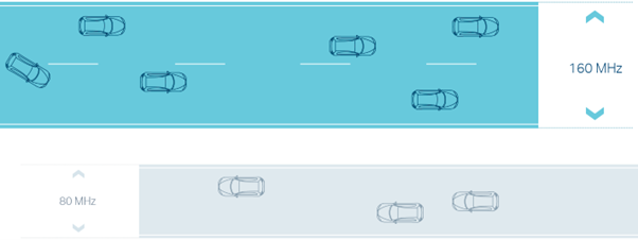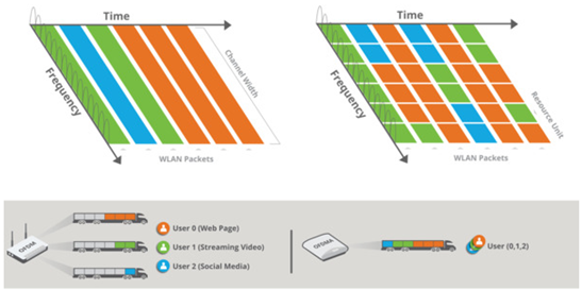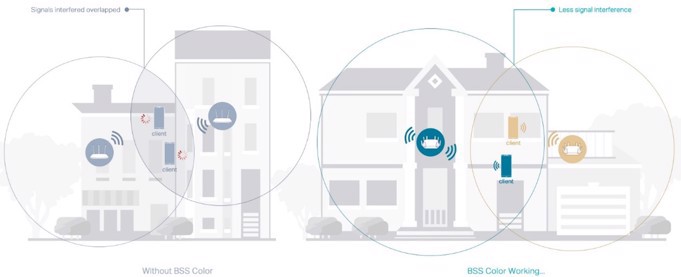Exponential increases in devices and WLANs
The original Internet architecture was based on the availability of 4.3 billion addresses (IPv4). However, the rapid growth of the Internet since the late 1980s has meant that this pool of addresses has become exhausted faster than expected, resulting in the necessary development of scalability improvements, such as private subnetting and the IPv6 protocol. A similar scenario exists in the wireless networking space.
The dramatic proliferation of mobile devices over the last decade has led to a tremendous need for wireless local area networks (WLAN), now deployed in almost every developed region of the globe. From homes to schools and airports to offices, government buildings, military facilities, coffee shops, bookstores, and many other venues. Wireless networks are everywhere and almost inescapable. The image below shows the results of an exercise capturing traffic of all wireless Access Points (APs) in range on a journey through South London – over 5000 in just a 30-minute car journey.

Due to the sheer scale of WLAN deployments, the frequencies used in Wi-Fi technology are flooding, resulting in interference, disruption, and performance concerns - these issues will only exacerbate if not addressed. Over the years since 1997, when the original Wi-Fi standard was first adopted, there have been several major upgrades (‘generations’) to Wi-Fi standards to address and improve on any issues. The sixth and most recent of these generations is the aptly named ‘Wi-Fi 6’, also known as 802.11ax.
Being the next-generation wireless standard, Wi-Fi 6 of course offers faster data transfer speeds than its predecessor Wi-Fi 5 (802.11ac), however, the main goal of this amendment is improvements in congested areas. With seemingly every electronic device requiring an Internet connection these days, even your device-packed home is considered a congested area, and Wi-Fi 6 is here to ensure your smartphone, computer, TV, lights, fridges, microwaves, and other internet-connecting devices all run at the highest level of performance and efficiency.
Wi-fi 6 technological improvements:
1. 160MHz Channel Width
The width of a Wi-Fi channel dictates how much data can pass through and at what speed. Wider channels are usually associated with more data transferred at faster speeds. In previous generations, channel width topped out at 80MHz on the 5GHz frequency., However, Wi-Fi 6 will provide the availability to 160MHz channels. To demonstrate this significance, imagine an 80MHz channel as a single-lane road where the cars travelling along it are data packets being transferred. Now, add another lane, and increase the speed limit of this road. The doubling of channel width creates a much faster connection, allowing high-quality streaming, large file downloads and uploads, as well as responsive smart devices to all function without buffering.

2. OFDMA
Older iterations of the 802.11 wireless standards are client-centric with a randomised, “first come, first serve” approach to connection requests. In contrast, Wi-Fi 6 uses a modulation scheme known as OFDMA (or Orthogonal Frequency-Division Multiple Access), which is AP-centric and enables the access point to simultaneously communicate back and forth with multiple devices. It does so by dividing each Wi-Fi channel into smaller sub-channels, which can each be utilised for different clients at the same time. The AP can determine how the sub-channels are allocated at any time, so for example, can switch between allocating a whole channel to a single user, or it may split the channel to serve multiple devices simultaneously. To use another road-based example, picture a series of delivery trucks (data packets) that can transport one parcel (information) to one house (device) at a time – this is comparable to a Wi-Fi connection in generations Wi-Fi 5 and prior. With Wi-Fi 6, each truck can carry multiple packages to multiple houses simultaneously. This is a vast improvement in efficiency, which works for both uploads and downloads, helping stabilise Wi-Fi performance, especially in highly congested areas such as stadiums and airports.

3. BSS Colour
Wireless networks can face issues when there are other wireless networks in range, such as with close neighbours or in apartment blocks. To combat channel interference, Wi-Fi 6 introduces Base Service Station (BSS) Colour. Where BSS is your home network, it can be configured as a ‘colour’, and frames from other networks of a different colour are marked and the router ignores them. Again, improving performance in congested areas. Simple but effective.

4. Target Wake Time
Another feature is Target Wake Time (TWT) which aims to provide better battery life to connected devices such as smartphones, tablets, and other portable devices. Wi-Fi 6 enabled access points can tell devices exactly when to put their Wi-Fi radios to sleep, and when to wake them up again, such as when a mobile phone is not in use overnight. This will conserve power, which means longer battery life.
Should you upgrade to Wi-fi 6?
The next generation of wireless standards provides significant improvements on its predecessor(s). However, this innovative technology is still in its early stages, and its adoption has been further slowed by the supply issues of silicon chips throughout the pandemic. Because of this, Wi-Fi 6 enabled routers will still carry a high early-adopter cost. Should you choose to invest regardless, you would also need devices connecting to the router to be compatible with Wi-Fi 6 to utilise the new technologies offered. As Wi-Fi 6 becomes more prevalent, new devices will all come with the capabilities to do so. Until this point, your smartphone, computer, TV, lights, fridges, microwaves and other devices are likely better off sufficing with Wi-Fi 5, the iteration that has served us all well for the past 8 years.


Categories